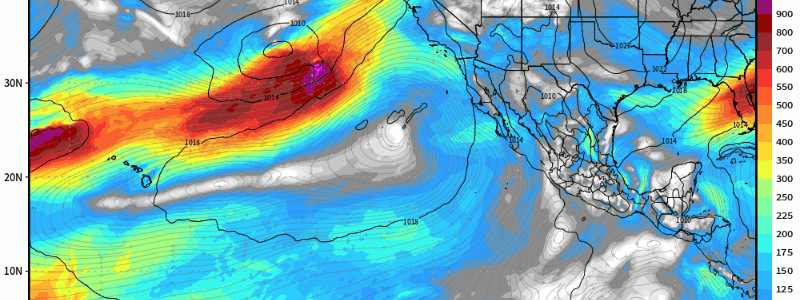
Another Atmospheric River
An educational article I discovered upon searching for a simplistic graphic nicely and succinctly renders an easy-to-digest visual aid. The fundamental purpose of the atmosphere is to seek balance where instability is tenaciously prevalent and through meteorological processes driven by the energy “budget” via the Sun is what “keeps the wheel spinning”. In this case, moisture is persistently being transported all across the globe. It’s through jet streams that carry water vapor from region to region supplying areas either in need or can be excessively much; nonetheless, it’s through a continuum of cycles we see this. In this case, these “rivers in the sky” are responsible for rendering masses of both warm air and moisture upon condensation and we see this occur in periods through the years for the West Coast (driven by cycles of ENSO and other macro-scale phenomena).
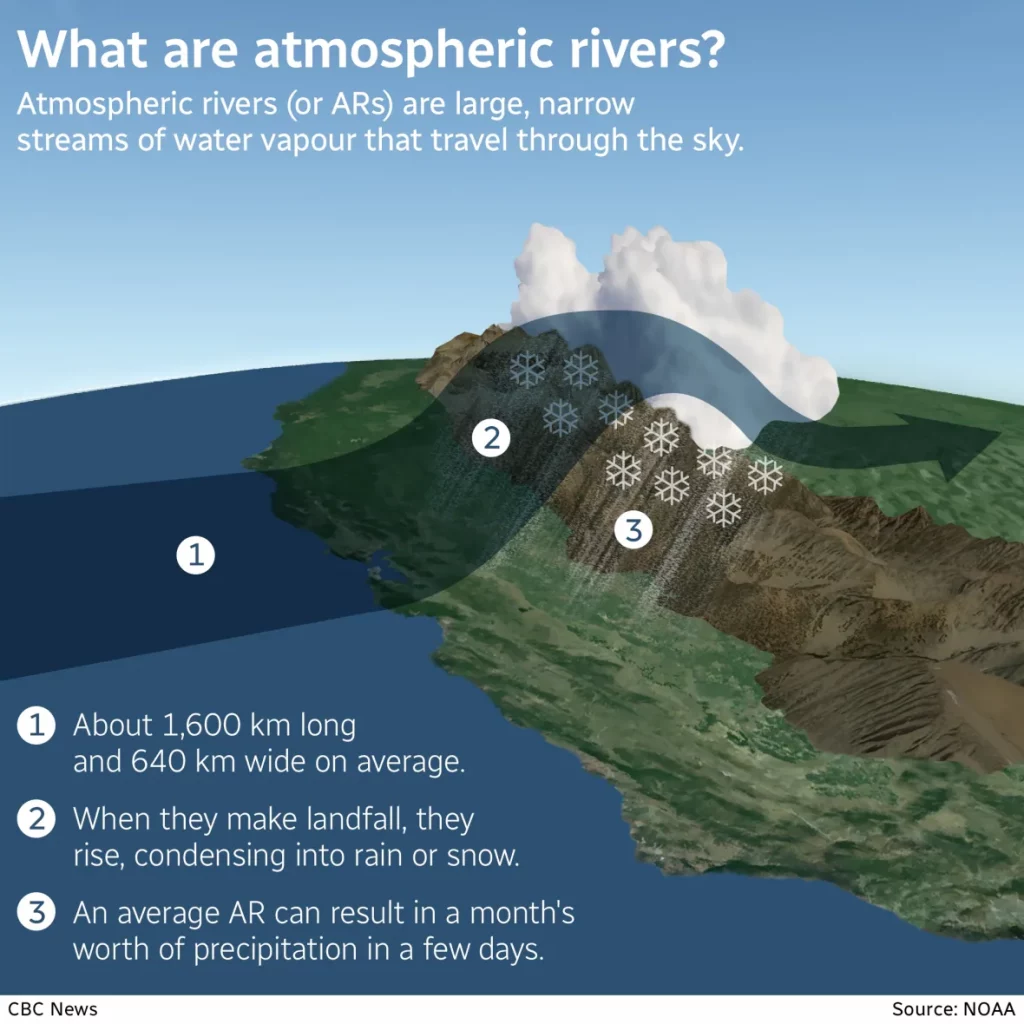
Since yesterday, a low pressure system has been traversing the Eastern Pacific, and will “crash” into the northern portion of California this afternoon. Within its warm sector, a moisture feed of tropical air extending from Hawaii will advect once again toward the West Coast as we see via GFS IVT (visual representation of water vapor readily available to be condensed to liquid water).
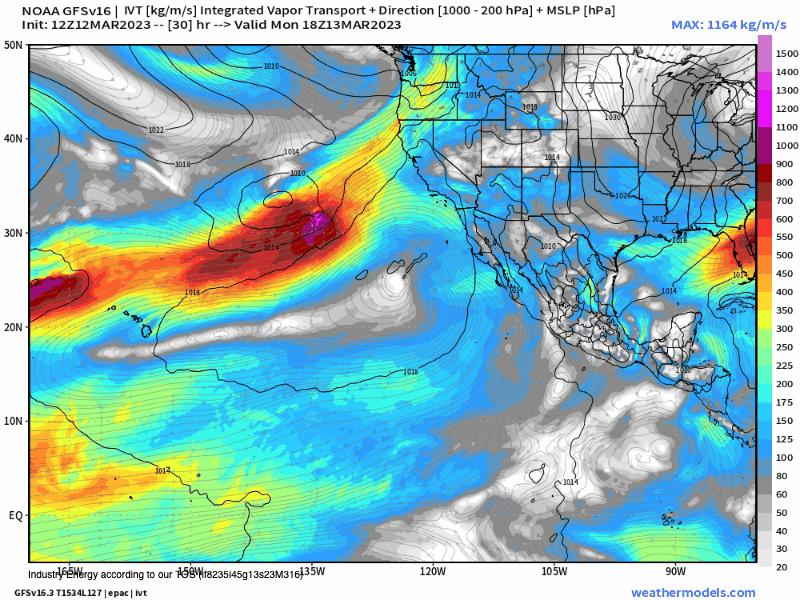
In excess of 2-4” through tomorrow will fall as a result of this deep moisture fetch for areas including the central-southern Sierra Nevada Mountains, Great Valley, and coastal locations below 4,000 feet especially Santa Barbara county along with neighboring locations. This also includes the general Los Angelous area.
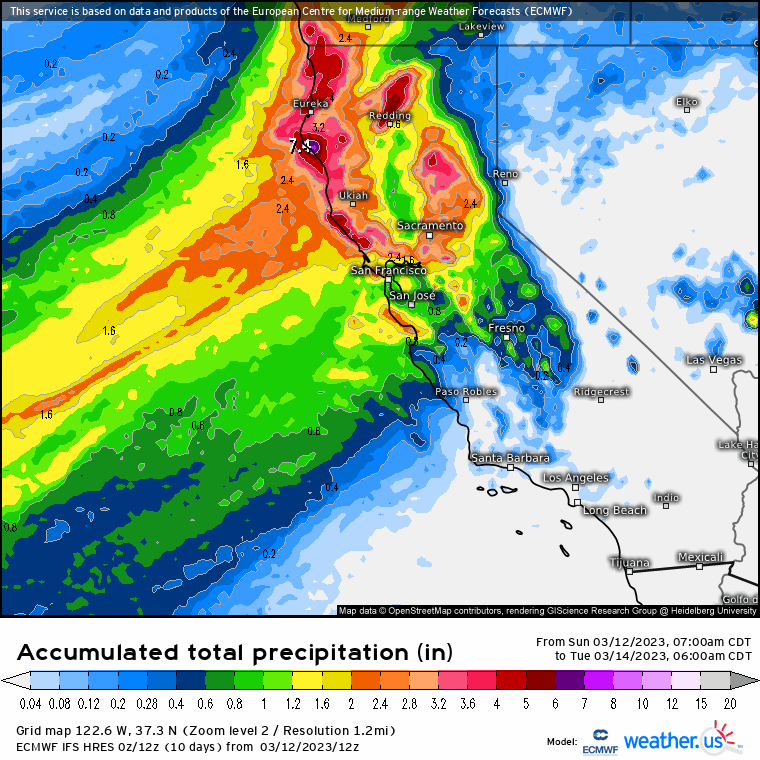
According to the Weather Prediction Center, there is a Moderate risk (level 3/4″), not to mention marginal and slight, for exceeding flash flood guidance where given the amounts of soil moisture, surrounding creeks/streams won’t take much (including saturated grounds in urbanized areas with any poor-drainage flooding) to allow ponding of water.
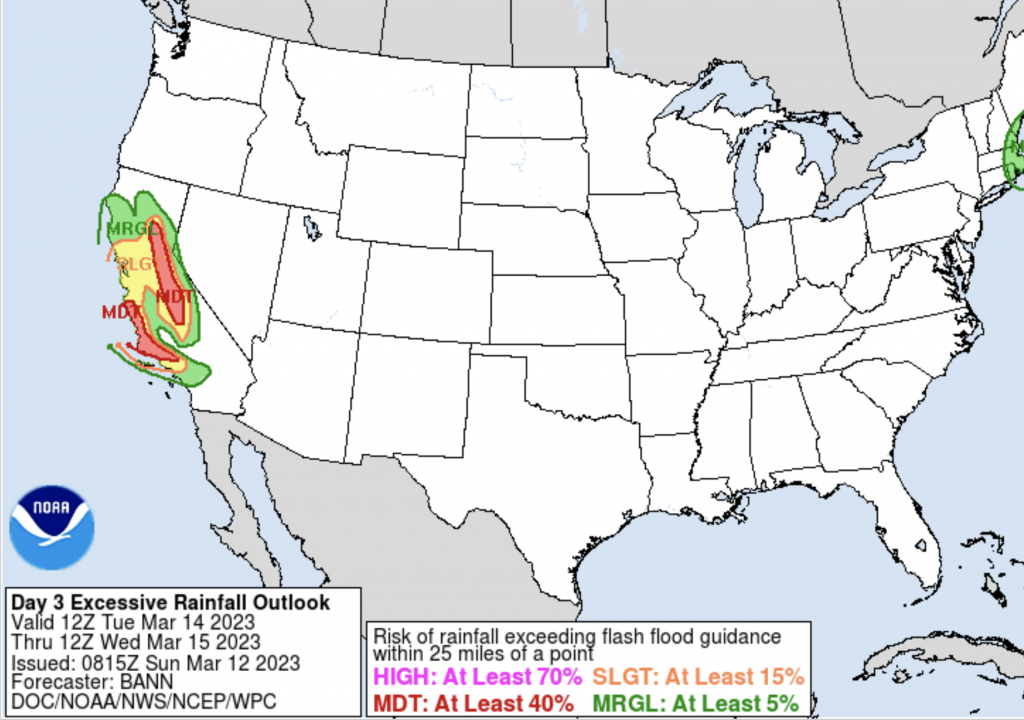

The good news is that after this event, a break in the targeted areas of California appears likely as the main activity from the Pacific shifts northward.










